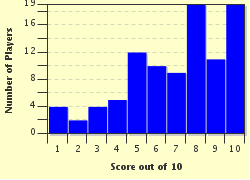Quiz Answer Key and Fun Facts
1. The Crown of Castile was born of the personal union between the Kingdom of Castile and another neighboring kingdom under Ferdinand III. In the flag pictured here, we have an image of a castle (intuitively) representing the Castilian half of the personal union and a lion (intuitively) representing what other half?
2. Here we have a map of the extent of Castile's realm on the Iberian peninsula. On the left flank is Portugal and on the right is Aragon, which necessitated that Castile maintain a strong army. In the bottom left-hand corner, you can also see what group of islands, which are located to the west of Africa and which Castile invaded in 1402?
3. In 1385, Castile had grown quickly in power and influence and it set its ambitions upon its neighbors. It attempted to meddle in the royal line of one neighbor, leading to the Battle of Aljubarrota, which is depicted in the illustration here. What kingdom gave them a decisive and humbling defeat?
4. This painting by Francisco Pradilla Ortiz shows the surrender of Muhammad XII of Granada to the forces of Castile in 1492. The Crown of Castile had successfully achieved their goal of pushing all Muslim rule out of the Iberian Peninsula, a goal which took over 700 years. What was this effort called?
5. Speaking of 1492, this engraving depicts the arrival of an explorer to the New World. You can see the "castles and lions" coat of arms that belongs to Castile on the flag the explorer is holding. Which explorer is it?
6. Ferdinand II of Aragon and Isabella I of Castile might be the most famous monarchs to rule the Crown of Castile, and they can trace their familial lines to the man in this image, Enrique II of Castile (also known as Henry II). After defeating his half-brother in 1369, he established which long-ruling house?
7. Romance-affiliated languages became more popular as early as the fourteenth century, and Castilian Spanish began to dominate. Works such as "Cantar de Mio Cid" (which features El Cid) and the adventure tale pictured here "Libro del caballero Zifar" (Book of the Knight Zifar) abandoned what traditional language long-used across Castile and Europe for the vernacular?
8. The image shown here is the Cantino planisphere, which shows the summation of Portugal's knowledge of the New World in 1502. On the left, there is a thick vertical line known as a demarcation line, guaranteed by treaty. Portugal was allowed to colonize everything to the right of this line and Castile was allowed to colonize everything to the left. It might seem unfair now, but as can be seen in the image, Portugal didn't know how big South America really was. What was the name of the famous treaty that led to this demarcation line?
9. This painting by Juan de Flandes shows the daughter of King Ferdinand and Queen Isabella. Though her reign lasted from 1504-1555, she was Queen of Castile in name only. Her Habsburg-related husband, Phillip the Handsome, ruled Castile "jure uxoris" (by right of his wife) until his sudden death in 1506. Her father, Ferdinand II of Aragon, soon after became regent when the country began to fall apart, sending her to a convent. After Ferdinand's death, her son Charles I ruled as regent in a similar manner, confining her and keeping her from making important decisions. Who was this forgotten queen?
10. Charles I (who was also Charles V of the Holy Roman Emperor) had gained control over the Spanish (Castilian) throne, though his mother was still technically queen. Many Castilian loyalists were upset that the Habsburg bloodline had infiltrated into their royal lines and they attempted to bring power back to Charles' mother. This painting by Antonio Gisbert depicts the result of their efforts: execution. What was the name of these dissenters who wanted the Habsburgs out of their country?
Source: Author
trident
This quiz was reviewed by FunTrivia editor
bloomsby before going online.
Any errors found in FunTrivia content are routinely corrected through our feedback system.

